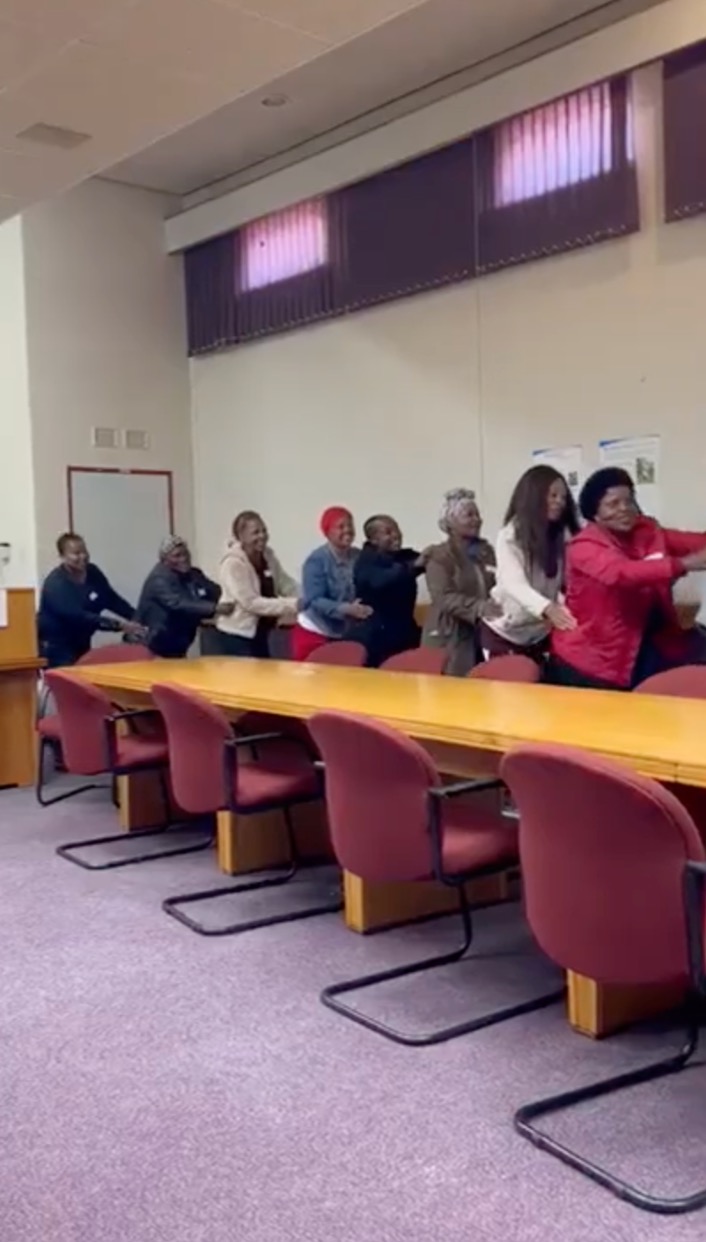
On 02 July, a pilot run of the planned activities was carried out with the enthusiastic, determined and tenacious women of the non-profit organisation (NPO) that we have partnered with - the We Can Women Development Centre. The feedback that these women provided as they partook in the various activities was invaluable. Together with the observations of Prof. Davis and the three translators from the University of Limpopo, the feedback enabled me to refine how I would introduce and explain the art-based activities that I planned to engage the voluntary participants in, so as to elicit their narratives of place and, in so doing, surface their sense(s) of place—more specifically their place meanings.
In addition to surfacing place meanings, the activities were also carefully crafted so that, by engaging in them, the participants would provide insight into: what they deem important or valuable in their communities now; what they hope never changes; as well as what they would like their community to look and be like in the future.
Overall, my approach, method and specific activities were inspired by those of Grenni et al. (2020) in their article "Linking spatial planning and place branding strategies through cultural narratives in places" in addition to those outlined by Pearson et al. (2018) in their publication "Arts-Based Methods for Transformative Engagement: A Toolkit". I say 'inspired' because the activities had to be tweaked to fit my specific research context. As such, the activities that I crafted and settled on, differed somewhat from those featured in Grenni et al. (2020) and Pearson et al. (2018).
Aware that not all participants would be able to write in either English and/or Sepedi, activities involving discussion and narration (in the participants' language of choice), as well as drawing, acting and moving, took precedence over writing. So, for instance, one activity involved participants getting up from their seats, standing in a line, putting their hands on the shoulders of the person in front of them to make a train (a time machine) and walking with me to the other side of the board room. This was a way of emphasising the temporal shift from 2023 to 2063.
Once the participants sat down on the other side of the room, we welcomed them to 2063. Energised from the movement (and in some cases the singing and dancing from 2023 to 2063!), some of the participants excitedly repeated, "welcome to 2063!". Once we had all settled into our new seats, I asked the participants - with the help of the translators - to imagine (1) that they had arrived in their community in the year 2063 and (2) that everything was perfect. I then asked them to, in smaller groups, discuss and draw what this perfect future looks like. Subsequently, the participants presented the collectively constructed image of their perfect community—aspects of which myself, the translators, Prof. Davis and the other group(s) then enquired more about.
The key findings from the above-described activity along with the other activities that I carried out, with the aid of Prof. Davis and our translators, will be discussed in a more in-depth piece. The piece will also include a description and reflection on the exact approach, methods and activities used. Suffice it to say here, and by means of ending this post, that there is indeed merit in employing arts-based methods in sense of place research generally and that which is conducted in a South African context, specifically. This statement is based on feedback, observations, reflections and the insights generated from the arts-based focus group activities that were carried out between 04 and 07 July 2023.